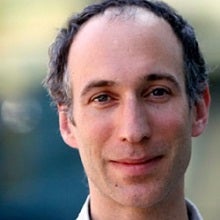Investigator, Howard Hughes Medical Institute
The Reich laboratory has placed a bet on the idea that by studying the deep human past using genetic data, it will be possible to obtain profound insights into our biology and into who we are.
The laboratory has used DNA variation data including ancient DNA to reconstruct the deep population history of Indians, Europeans, Near Easterners, Africans, Native Americans, and Pacific Islanders. In collaboration with Svante Pääbo’s laboratory in Leipzig Germany, analysts in the laboratory played an important part in demonstrating interbreeding between archaic Neanderthals and the ancestors of all non-Africans, and between archaic Denisovans and the ancestors of present-day people living in New Guinea, the Philippines, and Australia.
This research program has also produced insights into biology. The laboratory led work showing that around fifty thousand years ago, male hybrids of modern humans with archaic humans in Eurasia (Neanderthals and Denisovans) tended to be infertile. The laboratory also led working showing that in the last about ten thousand years in western Eurasia, there have been changes in the frequencies of mutations due to selection in response to changes in lifestyle and environment.
In 2013, the Reich laboratory opened the first state-of-the-art facility for genome-wide human ancient DNA analysis in the United States. Since that time, a major focus of the laboratory has been on automating and even industrializing the process of ancient DNA data generation to enable studies of thousands of individuals. The bet is that by combining information about the changes in frequencies of mutations over the last 10,000 years, with annotation of their biological effects from large-scale studies in medical genetics, it should be possible to obtain new insights into the way that human biology including human behavior evolve.

